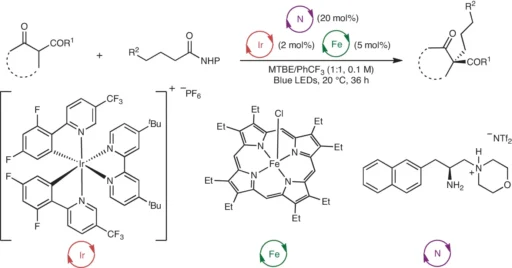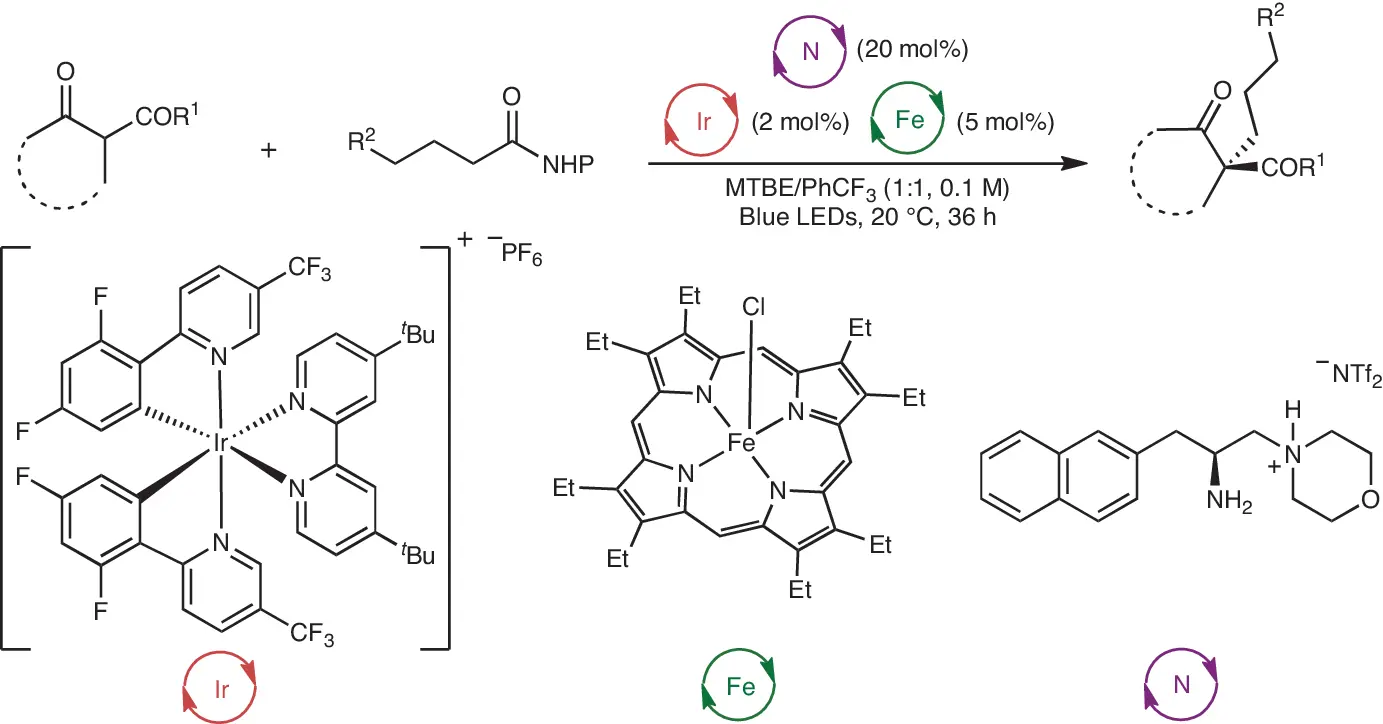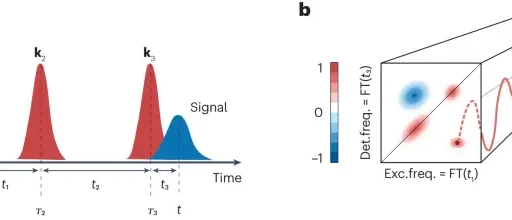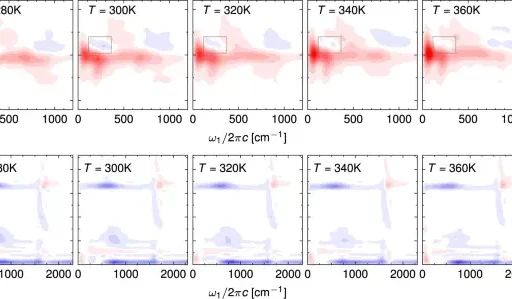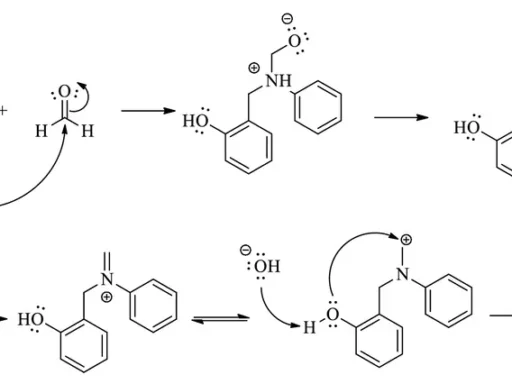Table of Contents
The synthesis of complex molecules with precise three-dimensional arrangements is a fundamental challenge in organic chemistry. Among these, quaternary stereocentres—carbon atoms attached to four different substituents—are of particular interest due to their prevalence in natural products and pharmaceuticals. Traditional methods for their synthesis often involve multiple steps and yield suboptimal results. However, recent advancements in catalysis have led to the development of innovative approaches, such as triple catalysis, which offers efficient and selective routes to quaternary stereocentres.
Introduction to Triple Catalysis:
This catalysis represents a cutting-edge strategy in organic synthesis, wherein three distinct catalytic processes work synergistically to facilitate complex transformations. This approach harnesses the power of multiple catalysts to orchestrate intricate molecular rearrangements with high precision and efficiency.
Understanding Quaternary Stereocentres:
Carbon atoms bonded to four unique substituents form quaternary stereocentres, resulting in a tetrahedral arrangement of atoms around the central carbon. These structural motifs play a crucial role in determining the properties and activities of organic molecules, making their synthesis a key focus of research in the field of organic chemistry.
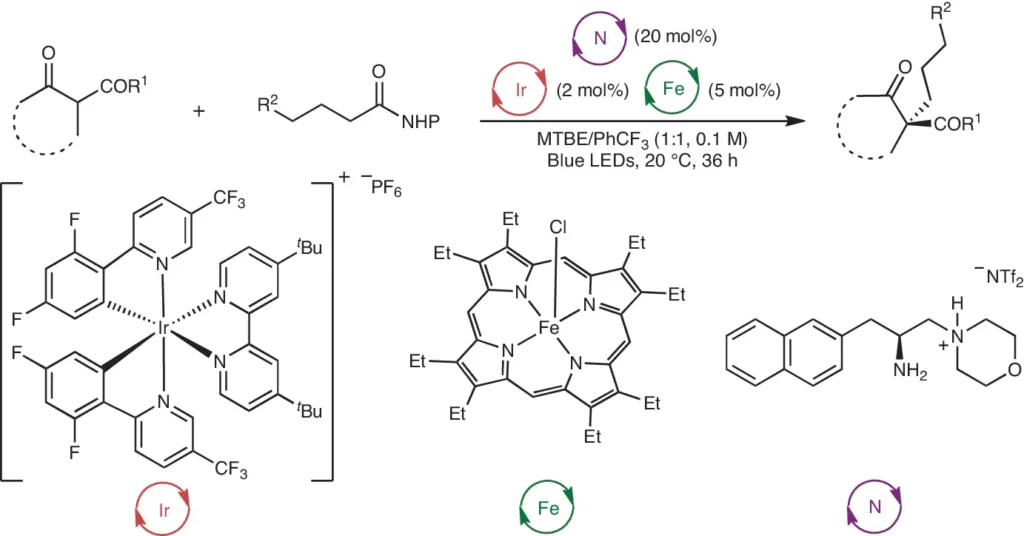
The Need for Efficient Synthesis Methods:
The synthesis of quaternary stereocentres poses significant challenges due to the steric hindrance and stereochemical complexity associated with these molecules. Conventional methods often involve multistep processes that are laborious, time-consuming, and suffer from poor selectivity, leading to low overall yields.
Triple Catalysis: An Innovative Approach:
It offers a promising solution to the limitations of traditional synthesis methods by enabling the simultaneous activation of multiple reaction pathways. This approach typically involves the coordination of three different catalysts, each responsible for initiating specific bond-forming events, thereby streamlining the synthetic process and improving overall efficiency.
Mechanisms Involved:
The success of this catalysis relies on the intricate coordination of multiple catalytic cycles, each governed by a distinct set of reaction mechanisms. These mechanisms may include Lewis acid-base interactions, hydrogen bonding, and metal-mediated catalysis, among others, depending on the nature of the substrates and catalysts involved.
Applications of This Catalysis in Quaternary Stereocentre Synthesis:
Recent studies have demonstrated the utility of triple catalysis in a variety of transformations leading to the formation of quaternary stereocentres. Examples include the construction of chiral cyclic compounds, asymmetric allylic substitutions, and intramolecular cyclizations, among others.

Advantages of Triple Catalysis:
Compared to traditional methods, this catalysis offers several distinct advantages, including enhanced selectivity, improved reaction rates, and the ability to access structurally diverse scaffolds with higher efficiency. Additionally, the modular nature of this catalysis allows for the facile optimization of reaction conditions and catalyst systems, further expanding its utility in complex molecule synthesis.
Challenges and limitations:
Despite its promise, triple catalysis is not without its challenges. Factors such as catalyst compatibility, substrate scope, and reaction conditions can significantly impact the success of a triple catalytic process. Moreover, the scalability of this catalysis for industrial applications remains an ongoing area of research and development.
Future Opportunities and Research Directions:
The continued advancement of these catalysis holds great promise for the field of organic synthesis, with potential applications ranging from drug discovery to materials science. Future research efforts are likely to focus on expanding the scope of triple catalytic transformations, optimizing reaction conditions, and developing more efficient catalyst systems to address current limitations and challenges.
Conclusion:
In summary, It represents a powerful tool for the synthesis of quaternary stereocentres, offering unparalleled levels of selectivity, efficiency, and versatility. Triple catalysis, which harnesses the synergistic effects of multiple catalysts, enables the rapid assembly of complex molecular architectures with unprecedented precision, paving the way for exciting developments in organic chemistry and beyond.
FAQs:
1). What is triple catalysis?
It is a synthetic strategy that involves the simultaneous use of three distinct catalysts to facilitate complex molecular transformations with high efficiency and selectivity.
2). How does triple catalysis differ from traditional catalytic methods?
Unlike traditional catalytic methods, which typically rely on a single catalyst to mediate a specific reaction, triple catalysis harnesses the cooperative effects of multiple catalysts to orchestrate intricate bond-forming events.
3). Can triple catalysis be applied to other types of stereocentrifuge synthesis?
While the synthesis of quaternary stereocentres has primarily used these catalysis, other types of stereocentre synthesis could potentially benefit from its principles, depending on the specific requirements of the transformation.
4). Are there any safety concerns with this catalysis?
When conducting triple catalytic transformations, as with any chemical reaction, one should observe proper safety precautions, including the use of appropriate protective equipment and adherence to established protocols for handling hazardous materials.
5). What are some recent breakthroughs in this catalysis research?
Recent advancements in this catalysis research include the development of novel catalyst systems, the discovery of new reaction pathways, and the application of triple catalysis in complex molecule synthesis, paving the way for exciting opportunities in organic synthesis and beyond.
For more chemistry blogs, visit chemistry Master

